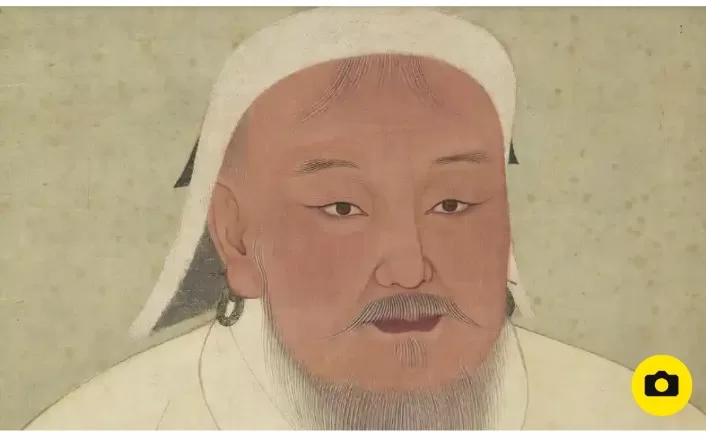A significant cultural dispute that strained relations between France and China has reached a resolution, culminating in the opening of a prominent exhibition at the Chateau des ducs de Bretagne history museum in Nantes. The exhibition, titled “Genghis Khan: How the Mongols Changed the World,” delves into the legacy of Genghis Khan and the expansive Mongol empire, offering a modern reinterpretation of its geopolitical significance.
This remarkable showcase marks the first French exhibition dedicated to the enigmatic ruler, Genghis Khan, who, at the time of his death in 1227, held dominion over an empire extending from the Caspian Sea to the Pacific Ocean. This vast domain surpassed the realms of both Alexander the Great and the Roman Empire in size.
Beyond the traditional portrayal of Genghis Khan as a ruthless warrior, the exhibition endeavors to shed light on the empire’s broader and enduring contributions. It delves into subjects such as climate change, pandemics, cartography, and scientific advancements, all influenced by the Mongol empire’s presence. At its zenith, this empire controlled over 22% of the Earth’s landmass, spanning from Japan’s shores to Eastern Europe.
The origin of the 2020 museum dispute lay in a collaborative project with the Inner Mongolia Museum in Hohhot, China. Chinese authorities attempted to exert control over the exhibition, insisting on the removal of certain terms, including “Genghis Khan,” “empire,” and “Mongol.” They also sought to dictate the content of exhibition brochures, explanations, and maps, coinciding with a period when China was tightening its repression of ethnic Mongols, primarily residing in Inner Mongolia.
The Nantes museum took a principled stand, rejecting these demands, asserting that the Chinese authorities sought to manipulate and distort Mongol culture to suit a new national narrative.
This resolute response led to the exhibition’s collaboration with museums in Mongolia, the landlocked country nestled between Russia and China. The show arrives amid renewed interest in and reevaluation of the history of the Mongol empire, anticipating a forthcoming exhibition at the Royal Academy in London, focusing on Mongol art.
Bertrand Guillet, director of the Chateau des ducs de Bretagne and Nantes history museum, emphasized the importance of examining the Mongol empire beyond the conventional lens of conquests. He described the empire as a place where sedentary and nomadic populations coexisted, fostering globalization and knowledge exchange, ultimately igniting transformative changes in the course of history.
Moreover, this reevaluation of the Mongol empire is portrayed as relevant to contemporary geopolitics, as it offers insights into topics like the China-Russia relationship, developments in Iran, and the dynamics of central Europe. Historical echoes are found in the empire’s response to climate change and the spread of pandemics, such as the great plague, which played a role in its eventual decline.
The exhibition, featuring more than 400 artifacts, including helmets, textiles, ceramics, and paper currency, will remain open until May 5, 2024, offering an enlightening journey into the profound impact of the Mongol empire on history and its enduring relevance to the modern world.







